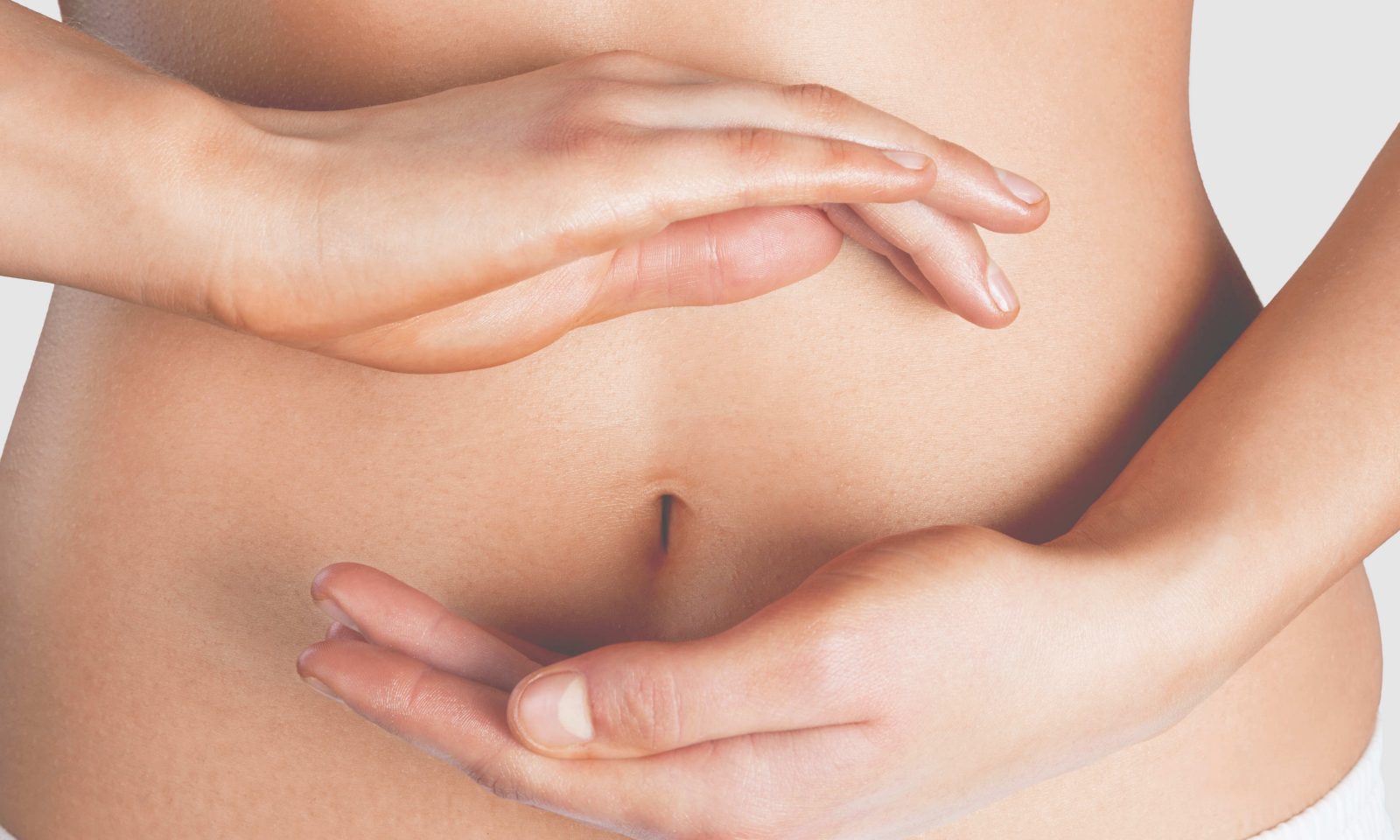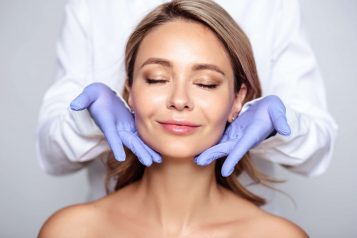Board-Certified Plastic Surgeon Dr. Alina Sholar was born in Port Arthur and grew up in Orange, TX, excelling in art, music, and science throughout her early school years. After receiving a full-tuition merit scholarship from the Nelda C. and H.J. Lutcher Stark Foundation in Orange, she received her BS degree in Biomedical Sciences with Magna Cum Laude honors from the College of Veterinary Medicine at Texas A&M University in December 1994. She did surgical research in an esteemed scientific laboratory at the University of Texas with her culminating in the publication in a prominent scientific journal, Perfusion. She was there awarded the prestigious Janet M. Glasgow Memorial Award and Achievement Citation for Women in Medicine, along with other meritorious honors and accolades like the Robert Wood Johnson Fellowship Award in medicine. Her medical artwork has been published in prestigious medical journals and textbooks such as the Annals of Plastic Surgery, Plastic & Reconstructive Surgery Journal, Annals of Surgical Oncology, and Cameron’s Current Surgical Therapy. Haute Beauty expert Dr. Sholar gives an in-depth explanation about the gut-skin connection.
 Photo Credit: Shutterstock
Photo Credit: Shutterstock
No, it’s not just a gut feeling. In recent years scientists have started to realize that our guts have a major impact on our health and well-being. They have also learned that a flourishing gut means a healthy immune system, but multiple studies have also found that our gut also has control over our complexions. Could our skin issues be a sign that it’s actually our gut health that is gone away?
The gut-skin connection
Cumulative evidence has revealed an intimate, 2-way connection- actually, a communication- between the gut and skin, and numerous studies link gastrointestinal health to skin health. The gut and skin enjoy a constant “conversation” via what has become known as the gut-skin axis. While symptoms of gut health issues can vary, the skin is often a great barometer for what’s going on inside the gut. The healthy gut is where we make vitamins and nutrients, metabolize hormones and make neurotransmitters, and the immune system works to neutralize pathogens. So, it’s important to get your digestive health in check in order to feel well and enjoy clear, glowing skin. In particular, the collection of trillions of strains of bacteria and microbes, called the gut microbiome, appears to influence the development of many inflammatory skin disorders. The microbiome maintains balance throughout the body, but can majorly affect our other organs, especially our skin. If we experience any issues with our gut, like inflammation, leaky gut, or digestion problems, like an indicator light on your car is a sign of trouble, our skin is usually the first place we notice problems.
The microbiomes of both the skin and the gut play an important role in a wide variety of skin disorders- most notably acne, atopic dermatitis, rosacea, and psoriasis, as it is a key regulator for the immune system. Hence, dysbiosis (an imbalanced microbiome) in the skin and/or gut is associated with an altered immune response, promoting the development of skin diseases.
What do the gut and skin microbiomes do?
Both microbiomes communicate with your immune system, tempering inflammation and protecting us from infection. “Beauty bugs” (good bacteria) have been shown to act as a natural protective shield against “bad bugs”. Good bacteria crowd out the overgrowth of bad bacteria. If your skin is irritated, inflamed, or congested, chances are high that there may be an imbalance in your gut microbiome as well as your skin microbiome. Some skin issues have a higher chance of being related, including rashes, breakouts, redness, dryness and inflammation, and prematurely aged skin. Through complex immune mechanisms, the influence of the gut microbiome extends to the skin.
Both gut and skin microbiomes affect how well the skin’s barrier can work to defend us against bacteria, fungus, viruses, allergens, chemicals, and even UV damage. The skin’s epidermal cells maintain an important barrier between the internal body and the external environment. They act as the first line of defense, preventing the entry of microorganisms. The skin cells themselves present a formidable physical barrier to most microorganisms, but all that surrounds those cells is even more important.
The skin effectively performs its functions – protection, temperature regulation, water retention, and more – when in a state of balance. Effective skin cell turnover is essential to maintaining this state. Ultimately, this results in about 15 layers of densely packed corneocyte cells held together with multiple lipid bilayers in a “brick and mortar” fashion. The corneocytes serve as the bricks, while ceramides, cholesterol, fatty acids, and cholesterol esters make up the mortar- known as the lipid bilayer barrier- that holds the bricks together. When epidermal turnover functions as it should, the brick and mortar structure serves as an effective skin barrier with the ability to limit moisture loss and protect from invasion by foreign substances. The skin and gut microbiomes both influence this skin cell turnover, maintain proper skin pH of 5.0 and boost barrier protection.
What happens when my microbiome is imbalanced?
Good bacteria are awesome. Bad bacteria make you sick. Just like the gut microbiome, the skin microbiome has gained significant attention in recent years in dermatology. The gut microbiome influences the skin microbiome. When there is a disturbed intestinal barrier, bad intestinal bacteria and their metabolites gain access to the bloodstream, accumulate in the skin, and disrupt skin physiology. But when you have a healthy gut, bacteria ferment fiber into short-chain fatty acids that play a pivotal role in determining the predominance of healthy skin bacteria. Propionibacterium in the gut, for example, is capable of producing fatty acids that can exhibit a profound antimicrobial effect against not only acne-causing bacteria but also the community-acquired methicillin-resistant Staphylococcus aureus (MRSA).
Paralleling the gut microbiome function, many skin conditions are associated with an imbalance in the skin microbiome. More and more studies are showing that where there is gut inflammation, there will be skin inflammation as well. Several studies report that individuals with rosacea have a higher incidence of gastrointestinal disease and are highly likely to have a small intestinal bacterial overgrowth (SIBO) of Acidaminococcus and Megasphaera as well as H. pylori infection. Another study demonstrated that probiotic consumption can prevent Atopic Dermatitis (eczema) altogether and that the skin disorder is characterized by an imbalance between specific bacteria Clostridium and Bifidobacterium. Psoriasis patients show changes in the diversity of bacteria. And, acne is associated with a decrease in Firmicutes and an increase in Bacteroidesbacteria, with a quite distinct gut microbiome composition and decreased diversity.
Altogether, these findings are supportive evidence for a functional interaction between gut and skin.
 Photo Credit: Shutterstock
Photo Credit: Shutterstock
How do we heal the gut to heal the skin?
Probiotics – or what we like to call “beauty bugs”, are living microorganisms (good bacteria) that can provide incredible health benefits to the skin when used orally or topically. For those dealing with acne, rosacea, eczema, psoriasis, and premature aging, nourishing and feeding the gut can make a huge impact. With intentional support of the microbiome, probiotics and prebiotics have proven beneficial in the prevention and treatment of inflammatory skin diseases.
To heal the skin, you must first heal the gut. When the gut microbiome gets out of whack, one of the best and easiest ways is to strengthen it with probiotics. Multiple studies have shown that probiotic supplementation results in:
- An increased dermal thickness
- Healthier, shinier hair
- Increased skin blood flow
- A significant decrease in skin water loss, increase in hydration
- Strengthened skin barrier function
- Decreased sensitivity and inflammation
Managing your microbiome: probiotics and prebiotics
When it comes to taking probiotics, there are no one ‘perfect’ bacteria, so taking a probiotic supplement with a wide variety of broad-spectrum strains and a high colony-forming unit count is your best bet. Do not just take one strain, because that in itself will cause an imbalance and is arguably the opposite of taking care of our microbiome. In addition to supplements, you should eat a balanced whole-food diet and probiotic-rich fermented foods, like kefir, yogurt, sauerkraut, pickled vegetables, and kimchi, to promote microbial diversity, along with the supplement. There is a multitude of probiotics that have been proven to have health benefits, and some we’re only just learning about, including Lactobacillus, Bifidobacterium, Enterococcus, Streptococcus, Bacillus, Akkermansia, and others.
Once you have started taking probiotics, you’ll also need to be aware of prebiotics to nourish and support a healthy microbiome. Prebiotics feed probiotics. They are a type of fiber that acts as food for bacteria to support the proliferation of our good gut bacteria. Prebiotics can be found in many high-fiber foods and are essential for supporting a healthy gut, and therefore healthy skin. You can find prebiotics in fiber-rich foods like apples, bananas, onions, asparagus, and oats. Just aim to get a varied intake of fruit and vegetables each day and you’ll be headed in the right direction. Your gut microbes ferment the fiber as they feed on it, creating those beneficial anti-inflammatory compounds called short-chain fatty acids that are essential for skin health, metabolic health, brain health, and immune health. Some research shows it could take around 4 to 12 weeks to experience health improvements after starting a probiotic, but this timeline could vary from person to person.
What about topical probiotics?
No doubt you’ve heard about probiotic skincare products, as their popularity is on the rise. While an inside-out approach is key, there is also benefit to the application of “probiotics” to the skin. However, it is not putting good bacteria on your skin that actually is beneficial. Instead, Probiotic Derived Bioactives, or PDBs, are used in skincare products. PDBs are healthy, non-living probiotic fragments derived from the most beneficial bacteria, put through a special fermentation process. When applied to the skin, they produce a myriad of beneficial skin responses that help to:
- Reduce bad bacteria on the skin’s surface
- Defend against harmful bacteria and pollutants
- Balance the pH of the skin
- Strengthen the skin barrier integrity
While we’re definitely not saying our beloved skin serums will be obsolete, it looks like adding some prebiotic foods and a daily dose of oral and topical probiotics into the mix could make a bigger difference than we ever thought— because once you do, your skin will really start to glow!
For more information, visit Dr. Brian A. Levine's social media:

























